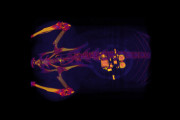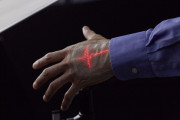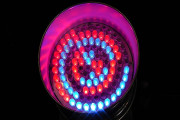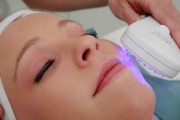 2019-01-15
2019-01-15
The on-going development of LED research and bioelectronics medicine has sparked off a new solution for curing bladder problems. A team consisting of researchers from Washington University School of Medicine, the University of Illinois and Northwestern University has created an implantable device with biointegrated LEDs that can detect and tamp overactivity in the bladder. The research team of neuroscientists and engineers introduced a miniaturized bio-optoelectronic device that is soft and stretchy and implanted it around the bladder of the lab rats. The device expands ...
Continue reading →
 2018-11-26
2018-11-26
Combining LED technology and medical research, several integrations have been revealed, showing the potential of the technology in healthcare applications and development. LEDinside has collected some innovative examples of LED applications which create possibilities for future medical improvement. Elastic Micro LED skin sensor system In February 2018, a new ultrathin, elastic Micro LED display that fits snugly on the skin was developed by researchers at the University of Tokyo and Dai Nippon Printing (DNP) in an academic-industrial collaboration. The int...
Continue reading →
 2018-11-06
2018-11-06
UV LEDs are widely applied in medical equipment and household products for sterilization. A Danish research team has further found that by combining treatment with UV irradiation, it helps to increase the effect of bacteria eradication of antibiotics. The light assisted approach can therefore reduce the usage amount of antibiotics.
(Image: Pixabay)
The overuse of antibiotics could result in bacterial resistance and in the worst case lead to incurable diseases. In order to prevent this situation, researchers are trying to find alternative treatments to reduce the use of an...
Continue reading →
 2014-07-02
2014-07-02
In 1967, a curious scientist in Hungary thought to perform an experiment to check if laser radiation can cause cancer in mice. He shaved dorsal hair and divided the mice in two set of groups and exposed one group of mice with a low powered ruby laser (694 nm). To his regret and to the joy of mice, they didn’t succumbed to cancer, but to his surprise, he observe that the mice treated with laser had grew back more hair as compared to the untreated group. This was the beginning of an era of photo bio-stimulation sparked by Endre Mester.
Continue reading →
 2019-01-15
2019-01-15
 2018-11-26
2018-11-26
 2018-11-06
2018-11-06
 2014-07-02
2014-07-02